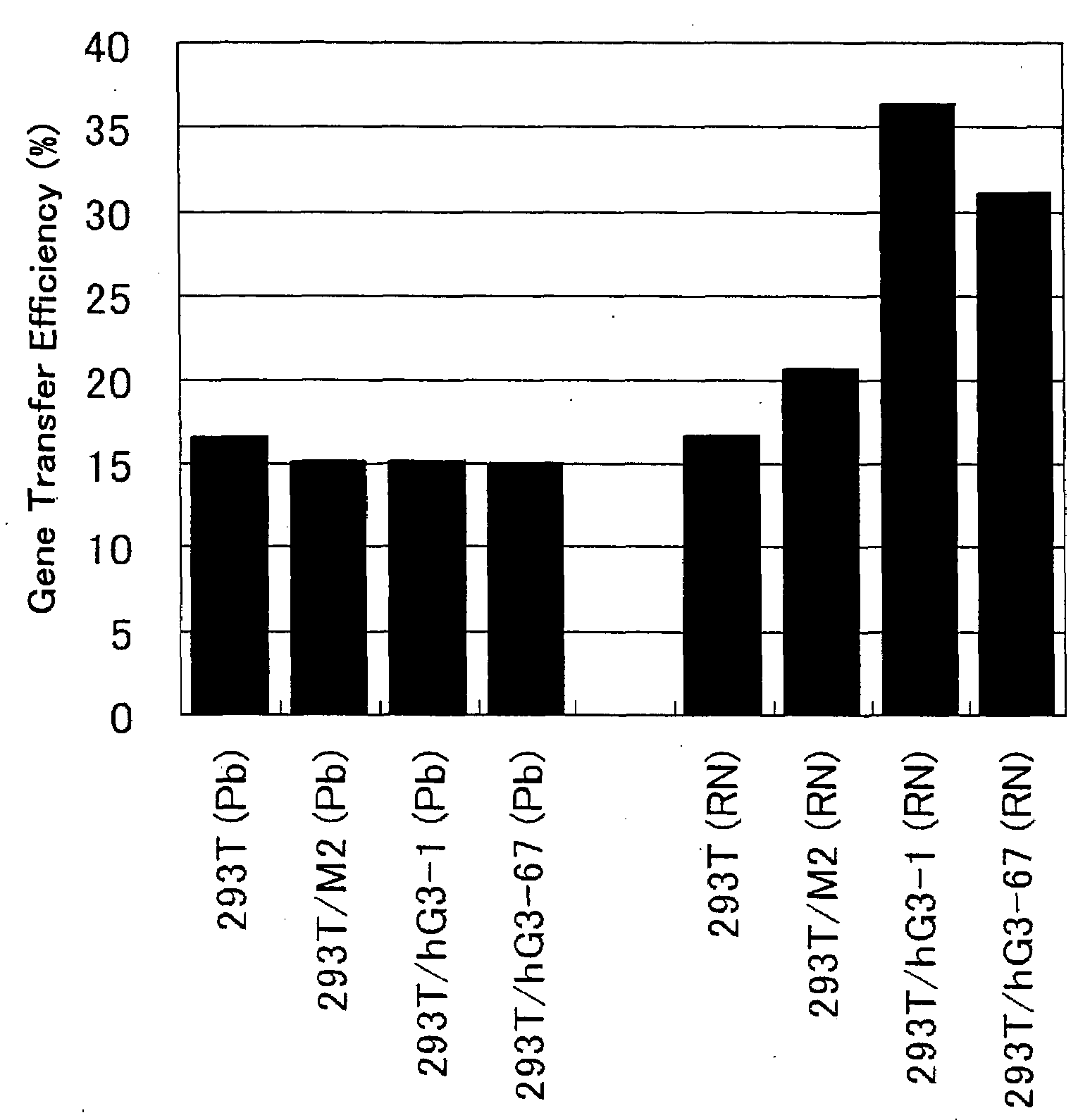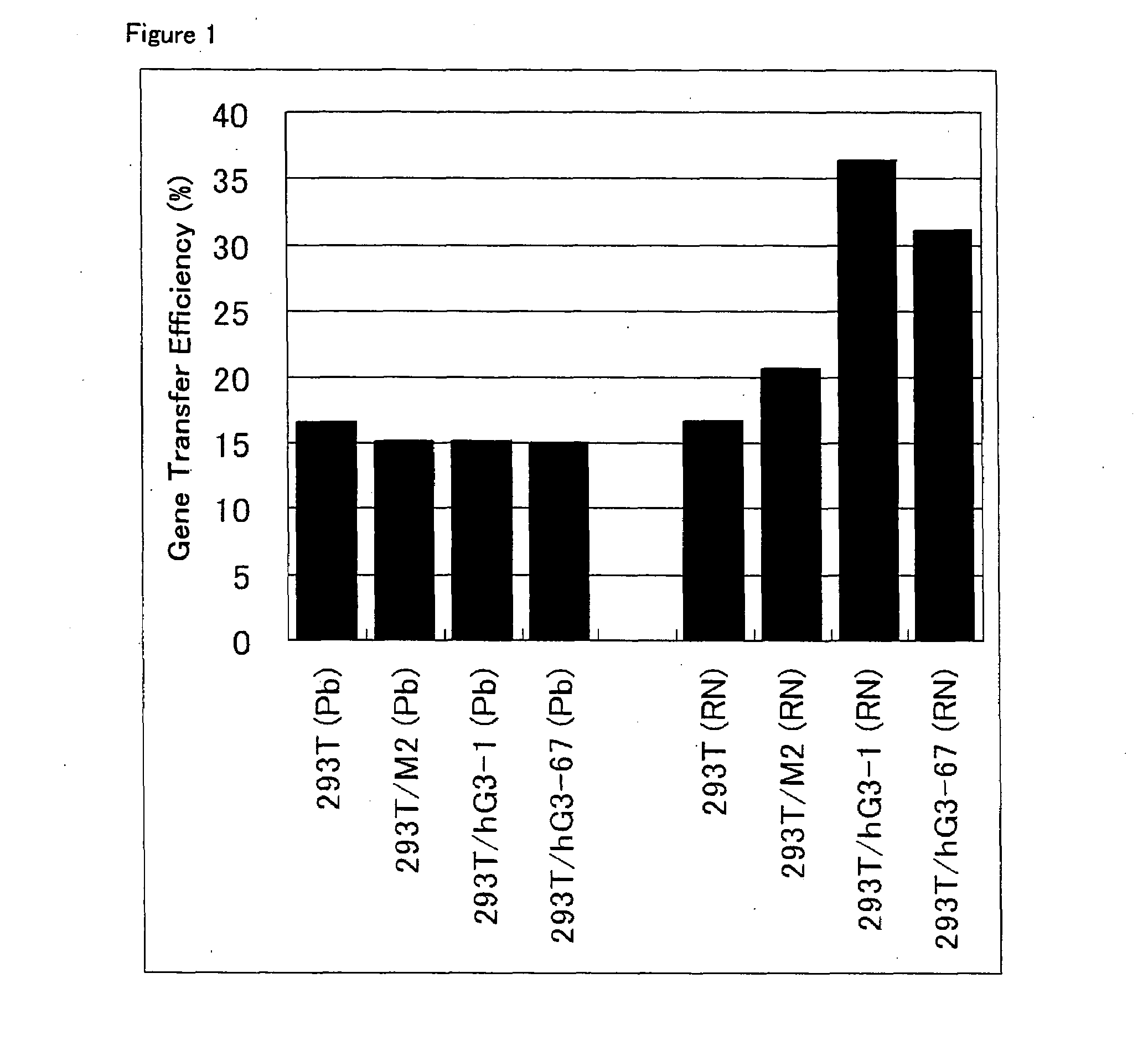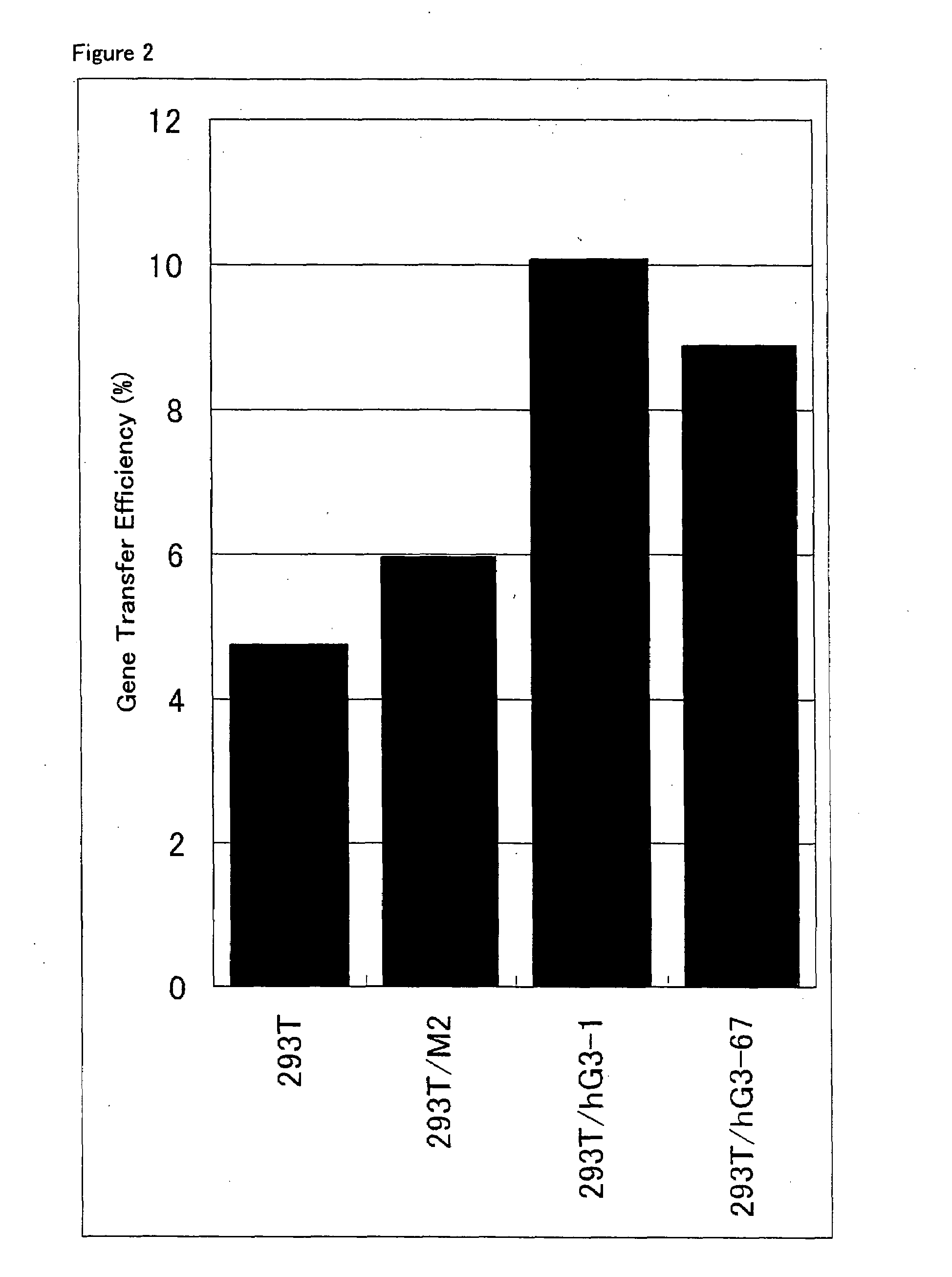Cell for Producing Retrovirus Vector
- Summary
- Abstract
- Description
- Claims
- Application Information
AI Technical Summary
Benefits of technology
Problems solved by technology
Method used
Image
Examples
example 1
Construction of Plasmid Vector for Expressing Human GnT-III
[0062]A DNA fragment containing a DNA encoding human GnT-III (GenBank E13194, SEQ ID NO:1) was prepared and inserted between NcoI and Sse8387I sites in a plasmid vector for gene expression pTriEx-3 Hygro (Novagen) to construct a recombinant plasmid. This recombinant plasmid is designated as phG3-Hygro.
[0063]This plasmid was used to transform Escherichia coli JM109, and one transformant colony was cultured with shaking in 5 ml of LB medium at 37° C. for 8 hours. Then, it was subjected to expanded cultivation in 80 ml of LB medium, and the plasmid DNA was purified using QIA filter Plasmid Maxi Kit (Qiagen).
example 2
1. Isolation of 293T Cell Transfer Clone
[0064]Human 293T cells (Mol. Cell. Biol., 7:379-387 (1987)) were cultured using Dulbecco's modified Eagle medium (DMEM, Sigma) containing 10% fetal calf serum (JRH) as a growth medium at 37° C. with 5% CO2. 3×106 human 293T cells were seeded into each 6-cm tissue culture plate (Iwaki Glass) and cultured overnight. On the next day, it was confirmed that human 293T cells reached semi-confluence, the medium was removed by suction, and 3 ml of the fresh growth medium was added to each plate.
[0065]10 μg of phG3-Hygro and 62 μl of 2 M CaCl2 were mixed with sterile distilled water up to 500 μl in a polystyrene round-bottom tube (Falcon). Immediately after adding 500 μl of transfection buffer (50 mM HEPES, 10 mM KCl, 12 mM D-glucose, 280 mM NaCl, 1.5 mM Na2HPO4 (pH 7.10)), the mixture was subjected to bubbling for 20 seconds utilizing excretion from an electric pipetter. The prepared solution was homogeneously added dropwise to the above-mentioned pla...
example 3
Preparation of Virus from 293T / hG3 Clone
1. Preparation of Virus Supernatant
[0070]Among the 293T / hG3 clones isolated in Example 2 above, seven clones for which expression of GnT-III gene was confirmed were selected, and amphotropic retrovirus supernatants were prepared from them. The same procedures were conducted using 293T cell and two 293T / M clones in control experiments. 1.5×106 cells of each cell clone were seeded into each well of a 6-well tissue culture plate (Iwaki Glass), and cultured overnight in 2 ml of DMEM containing 10% fetal calf serum at 37° C. with 5% CO2. On the next day, it was confirmed that each cell clone reached semi-confluence, the medium was removed by suction from each well, and 1.5 ml of fresh DMEM containing 10% fetal calf serum was added to each well. Chloroquin (Wako Pure Chemical Industries) at a final concentration of 25 μM was further added to each well. The followings were combined in a polystyrene round-bottom tube: 27.5 μg of a plasmid vector pGP (...
PUM
 Login to View More
Login to View More Abstract
Description
Claims
Application Information
 Login to View More
Login to View More - R&D
- Intellectual Property
- Life Sciences
- Materials
- Tech Scout
- Unparalleled Data Quality
- Higher Quality Content
- 60% Fewer Hallucinations
Browse by: Latest US Patents, China's latest patents, Technical Efficacy Thesaurus, Application Domain, Technology Topic, Popular Technical Reports.
© 2025 PatSnap. All rights reserved.Legal|Privacy policy|Modern Slavery Act Transparency Statement|Sitemap|About US| Contact US: help@patsnap.com



